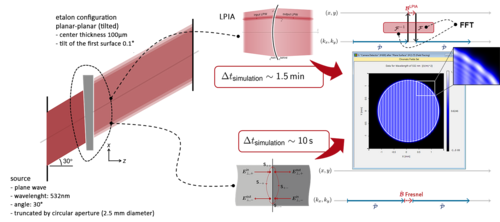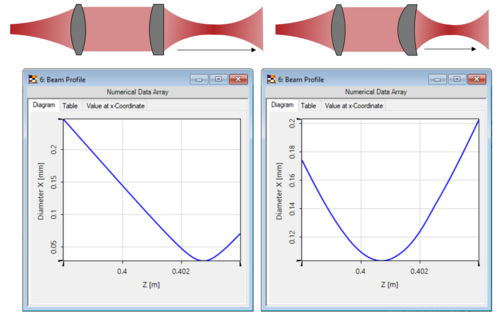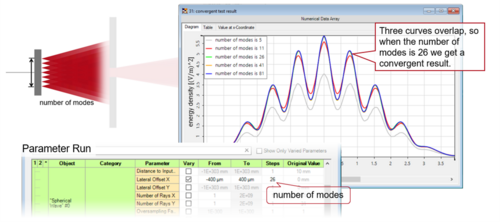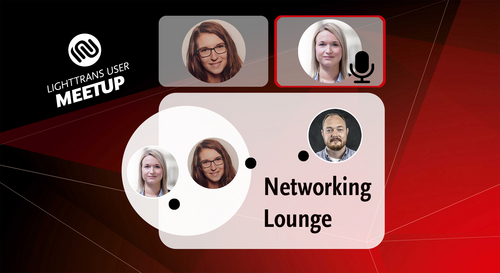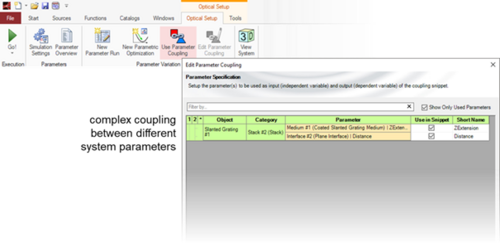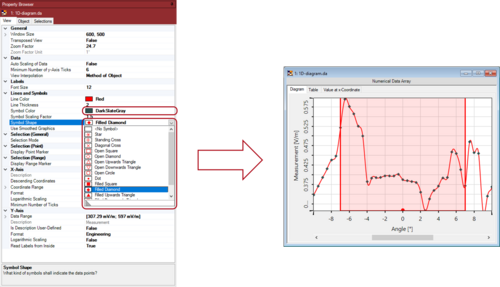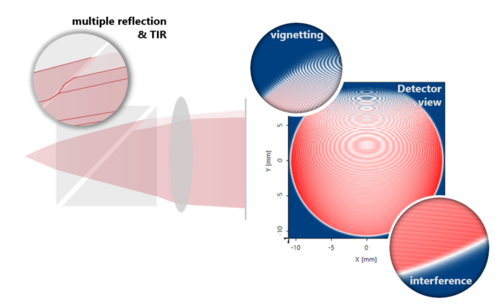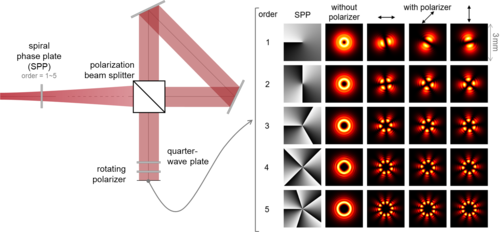What’s new in our Optical Modeling and Design Software?
Components, Solvers and Fourier Domains in VirtualLab Fusion
Fast physical optics rests squarely on the “connecting solvers” approach. One of the most important aspects of which is that it makes both Fourier domains (space and spatial frequency) available for the implementation of the electromagnetic field solvers – some solvers will be implemented in the one domain, others in the other. This results in a simulation sequence that must move back and forth between the domains. In this week’s newsletter we look at some practical implications of this and provide some handy tips to help you make the most of your work with VirtualLab Fusion!
Read moreThermal Lensing in Optical Systems
The advent of modern technologies in the area of material processing has seen an increase in the use of high-power laser sources in optical systems. The massive amount of heat generated by the high-energy sources leads to a deformation of the geometry and a modulation of the refractive index of the optical components in the system that will influence their properties. In VirtualLab Fusion these effects are handled by connecting surface operators with solvers for inhomogeneous media. We demonstrate these effects in various optical components common in material processing applications, like lenses and laser rods.
Read moreModeling of spatially extended partially-coherent source
In numerical simulations, when we represent light as an electromagnetic field, spatially extended sources can be modeled by several uncorrelated fully coherent fields, with identical energy density, but partially shifted with respect to each other [J. Opt. Soc. Am. A 27 (9), 2010]. In the fast physical optics software VirtualLab Fusion, we use this method to model a spatially extended partially-coherent source and explore the effect of the configuration of the elementary fields and the number of fields. Then we reproduce Young’s interference experiment using this source and investigate the coherence properties of the source by checking the changes in the contrast of the interference fringes.
Read moreTake part in our new event format: LightTrans User Meetups!
Interferometric Setups and Applications – Modeling & Analysis
28 April | 10:00 – 17:00 (CEST)
A new way of interacting virtually with our optical engineers and sales representatives.
Register now and save your seat for our User Meetup.
Webinar review
Have a look at our Key Learnings from the last webinar on Exploring VirtualLab Fusion.
Parameter Coupling feature of VirtualLab Fusion
The parameter coupling feature of VirtualLab Fusion enables the linking and configuration of dependence between parameters in an optical setup in a flexible way. For this purpose, the relevant parameters have to be selected and can then be used for instance as variables in mathematical formulas to calculate the values of other parameters of the system. Thus, parameter coupling allows the user to establish complex relationships between parameters of the optical system in question which will be automatically maintained. In particular, parameter coupling is very helpful if specific parameters of the optical system are intended to have a fixed relationship during an analysis or optimization.
Read moreData Arrays in VirtualLab Fusion
Data arrays are the most fundamental native data type in VirtualLab Fusion. Such a data type may be instantiated on either an equidistant or a non-equidistant grid. Being a generic data type, they are among the most flexible data types as to introducing physical attribute, re-sampling and interpolation. Array computing is made easy thanks to VirtualLab Fusion’s user-friendly GUI where users could perform operations without writing for-loops. Furthermore, data visualization and analysis are done on GUI level as well, meaning that the users could configure graph settings in the property browser or extract and analyze data locally by the selection tools in VirtualLab Fusion. In this short video, we seek to illustrate the intuitive mindset behind VirtualLab Fusion’s infrastructure which helps many users around the globe in facilitation of data processing.
Read moreConnecting Field Solvers demonstrated at Examples in VirtualLab Fusion
In modern optical systems very different kinds of elements are used in order to push the limits of our manipulation of light further and further. New elements are developed and traditional devices are steadily improved to obtain the desired functionality and performance, which not seldom increases the level of complexity of these components and the entire systems. VirtualLab Fusion with its fast physical-optics technology, that is based on the flexible and automatic connection of different field solvers, allows for an accurate modeling of your optical system and enables the detailed analysis of relevant effects.
Read moreVector Beam Generation
The vector beam is a beam that is fully polarized but shows different polarization states in different local positions on one detector plane. More specifically, if a polarizer is put after a vector beam, different energy density distributions will be recorded as the polarizer is rotated. Vector beams are widely utilized in many applications such as microscopy imaging or laser manipulation. Using an interferometer with a vortex-phase spatial light modulator (SLM) and wave plates a vector beam can be generated. However, the modeling of the generation process needs precise handling of the vectorial behavior and diffraction of the electromagnetic fields. VirtualLab Fusion, a fast physical optics software platform, is the perfect choice to model such beams. In VirtualLab Fusion, the electromagnetic field propagation through an arbitrary system can be calculated as polarization and diffraction phenomena are automatically handled.
Read more



